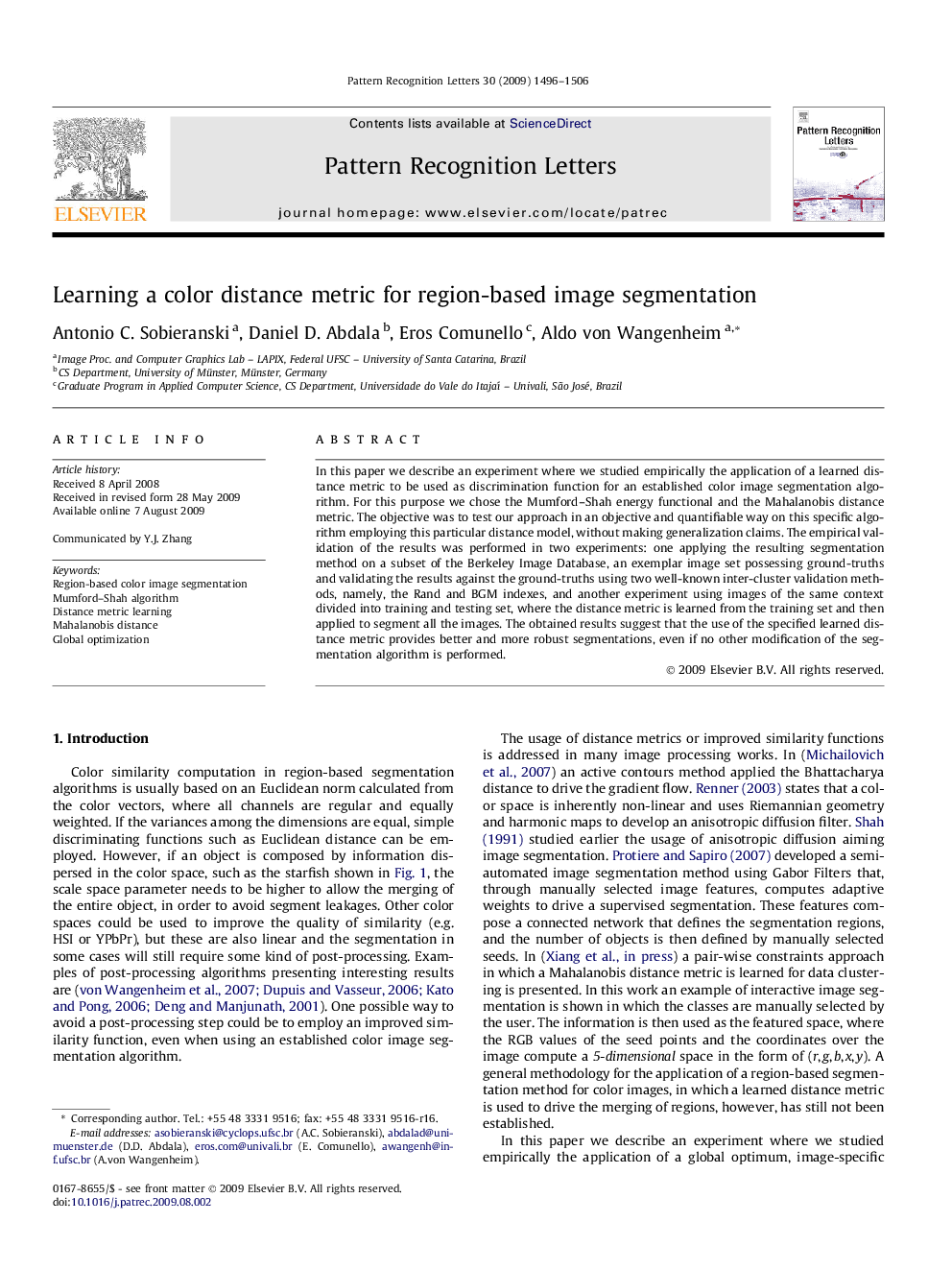| Article ID | Journal | Published Year | Pages | File Type |
|---|---|---|---|---|
| 534975 | Pattern Recognition Letters | 2009 | 11 Pages |
In this paper we describe an experiment where we studied empirically the application of a learned distance metric to be used as discrimination function for an established color image segmentation algorithm. For this purpose we chose the Mumford–Shah energy functional and the Mahalanobis distance metric. The objective was to test our approach in an objective and quantifiable way on this specific algorithm employing this particular distance model, without making generalization claims. The empirical validation of the results was performed in two experiments: one applying the resulting segmentation method on a subset of the Berkeley Image Database, an exemplar image set possessing ground-truths and validating the results against the ground-truths using two well-known inter-cluster validation methods, namely, the Rand and BGM indexes, and another experiment using images of the same context divided into training and testing set, where the distance metric is learned from the training set and then applied to segment all the images. The obtained results suggest that the use of the specified learned distance metric provides better and more robust segmentations, even if no other modification of the segmentation algorithm is performed.
